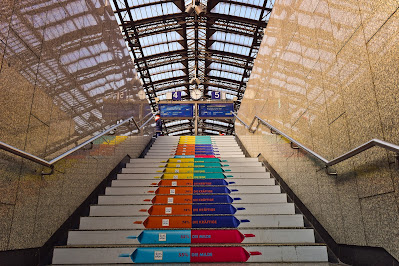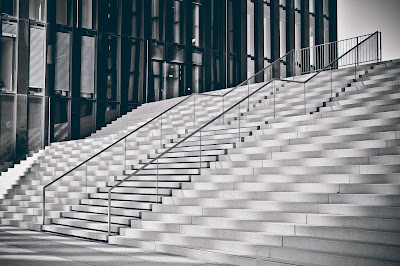Decorative steel handrails can add a unique and elegant touch to any staircase or deck. They are durable and easy to install, but they also come with an air of sophistication.
There are many things to consider when buying decorative steel handrails for your home. It is important to make sure that the product you choose is well-built and has a high level of quality. You will also want to make sure that the style and design match the overall look and feel of the house, both inside and out.
Steel is a strong and reliable material for railing systems. Nearly all steel handrails are made from galvanized steel, which is coated with zinc to prevent rust and corrosion.
The most common types of railing systems that use steel handrails are guards, balustrades, and stairways. They protect from falls in high-risk areas such as stairs, balconies, porches, and railings on boats or ships.
The benefits of steel handrails: they can be used outdoors or indoors; they resist most weather conditions, and they do not need painting or maintenance.
Steel handrails come in many different styles: curved rails can be used for guard rails at the top of stairs; straight rails can be used to create a balustrade system; custom handrails can be used to address specific requirements.
Introduction: What are the Different Types of Steel Handrails?
There are four types of steel handrails. They are made from different materials for different purposes.
The most common type of steel handrail is the aluminum railing. It is often used for exterior or interior designs to complement features in the home or office. The advantages that it has over other types of rails are that it has a long life, it does not corrode, and it can be designed with any color in mind.
One alternative to aluminum railing is the stainless steel railing. This railing can be found in both interior and exterior designs because of its durability, low maintenance cost, and corrosion resistance. It also offers a variety of designs to choose from which makes it an attractive option when building a home or office space.
Steel handrails are one of the most popular railing materials due to their durability and low maintenance.
Steel handrails are essentially the cheapest option for those looking for a maintenance-free, long-term solution to their railing needs. Steel handrail is mostly used in residential buildings, commercial buildings, and industrial buildings. The railings can be either solid or perforated.
Types of Decorative Steel Handrails for Every Style & Budget
The purpose of a handrail is to provide a barrier and prevent people from falling, as well as prevent accidents resulting from wet or snowy conditions.
There are many types of decorative steel handrails that provide different styles and budgets to suit all needs. For those who have a limited budget, there are metal stairway railings that can be installed on stairs for a low cost.
Decorative metal handrails give a sleek modern look to any home, office, or commercial building. These rails can also be easily installed on stairs for an elegant aesthetic that doesn't break the bank.
Decorative metal handrails are a great addition to any home or business. They add a touch of class and sophistication to any staircase, porch, balcony, or hallway. There are many styles and colors of handrails available for purchase in stores today.
A Guide to Choosing the Best Kitchen Stairs with a Steel Handrail
Kitchen stairs are an important part of any kitchen. The design of the staircase can make or break the flow and aesthetic of a room. One of the most popular designs is a stainless steel staircase with a railing on both sides.
Steel handrails are some of the best types because they are sturdy, modern, and offer great safety features.
A stair rail is a type of safety railing that is attached to a staircase. It can also be a handrail, a banister, or a balustrade. The purpose of the stair rail is to protect people from falling or tripping while going up or down the stairs.
There are many types of stair rails, but the most popular ones are metal and wood. Metal stair rails offer greater safety since they are not prone to damage from moisture and can better withstand extreme temperatures. Wood stair rails offer beauty and elegance that blends into any kind of home interior design theme.
In general, stainless steel staircase rails have been made from stainless steel for their high durability and resistance to corrosion because it’s made from two sheets of metal with a gap between them so there’s no risk of corrosion.
What is Railing? All You Need to Know About Railings and Why They're Important.
A railing is a non-obtrusive safety feature that is installed on the side or around any place where there is a risk of someone accidentally falling.
A railing protects people from injury and provides a sense of security. They can be installed around decks, balconies, stairs, handrails, porches, and roof edges to provide protection.
Railing height depends on their location with the ground. But when they are installed for safety purposes, they are generally six feet high or higher.
Railings are a safety device that prevents people from falling off elevated surfaces or out of openings.
This code specifies the requirements for railings on ladders and stairs. It is important to note that this code is not mandatory and does not apply to all situations where railings might be needed. Furthermore, it does not apply to all areas in which there are no openings or where ladders or stairs are provided.
A railing should be installed near the edge of an opening on a surface such as a balcony, window sill, ramp, stairway, landing, platform, and so forth. The railing should also extend down the length of the opening and should be at least 36 inches high from the treads or ground below.










0 Comments